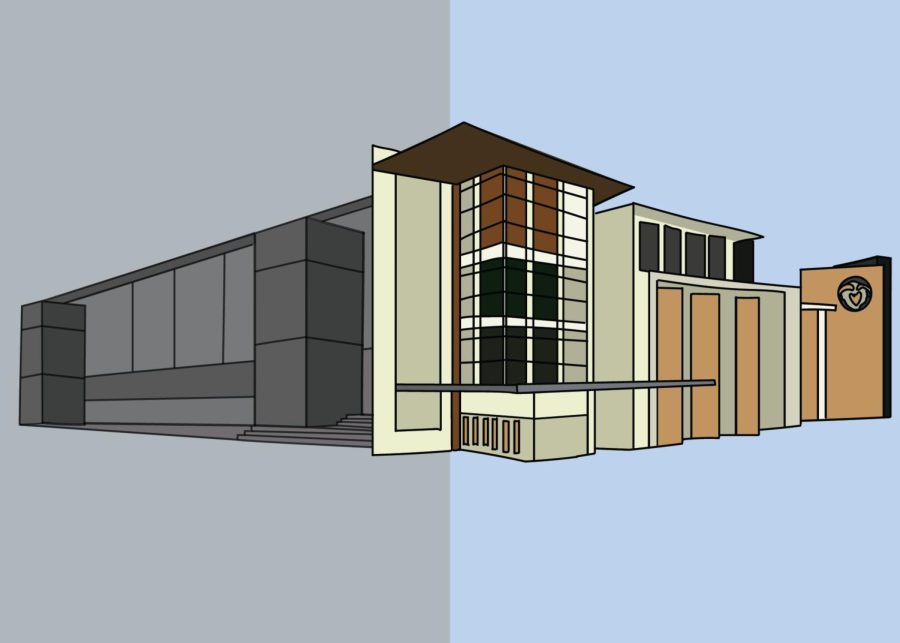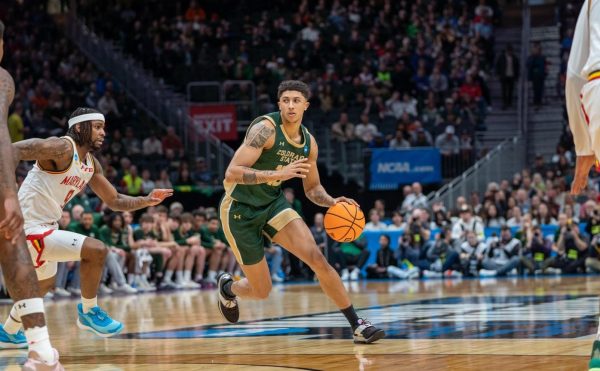The Clark project: What will CSU’s most used building become?
Collegian | Chloe Leline
Max Dietz
February 2, 2023
The committee behind the renovation of the Andrew G. Clark Building is getting feedback from students for its upcoming renovations, which brings Colorado State University that much closer to the new-and-improved Clark.
According to the College of Liberal Arts, roughly 99% of students at Colorado State University have at least one class in Clark at some point, making it a representation of campus life and the learning environment at CSU. As such, it has become more and more in need of renovations every year.
“What we want out of this project is a building that all CSU students can be proud of,” said Benjamin Withers, the College of Liberal Arts dean. “That’s a symbol of the academic excellence of the university as a whole.”
Clark has not always been the center of Barstool Sports memes and campus jokes as the modern student knows it to be. It was formerly a staple example of ’60s new formalism architecture and has been studied by CSU graduate students for its rich history.
It was, however, built to be more functional than beautiful, and while there are some attractive aspects, it was built to be a workhorse, according to Bruce Ronda, former associate dean.
“It’s a building that’s constantly used,” Ronda said. “It’s also a building that, because of that use, is a drain on facilities to keep up. It’s just like the building is constantly in motion.”
Over the years, Clark has morphed from an impressive architectural giant to a punchline. Students are often concerned about the quality of the building and how it is holding up. Instances like the pipes that froze over winter break don’t help that perception.
“We had to close Clark here over the winter break after the cold weather because some of the pipes froze,” Withers said. “That just highlights the importance of making sure that we address the issues in Clark to provide an environment that’s truly going to be reflective of that academic excellence.”
Beyond repaired pipes, students and faculty have great hopes for the revitalized Clark. They want the departments housed in Clark to be showcased and the students who enter to feel a desire to stick around.
“Right now we think of Clark as a transactional building,” Ronda said. “There’s a sense in other buildings, like (the Behavioral Sciences Building), for example, where people will actually do all those things but also come and gather and drink coffee and hang out and have conversations.”
Departments like anthropology, history and journalism and media communications want to be showcased to the community. They want a space that is open, accessible, welcoming and even eco-friendly.
“All our dreams and all our hopes and ambitions have to be grounded in the funds that are available and in the costs,” Ronda said.
The new project has received $38 million from the state legislature to be used for the renovations. This is expected to be only the first of a few installments from the state. Private funds of $11 million to $12 million will also be invested in the new Clark.
Completely demolishing Clark and fully rebuilding it isn’t feasible, budget or sustainability wise. It would require a lot of resources and waste the concrete blocks that give Clark such a stable structure.
“That’s why we called it revitalization,” Ronda said. “We want to keep what we have but renew it both inside and outside, give them both a different face and then build around it and also revitalize the spaces within it.”
This is in part why the process of renewing Clark has been an ongoing process since roughly 2016. There are many parties involved that must be considered even if the revitalization is widely supported at the legislative level.
“It’s been remarkable (seeing) the amount of support that we’ve had across all units and across all colleges for this renovation,” Withers said.
Clark is essential to creating a strong learning environment on campus, and the recognition of this importance is in part what has garnered so much support Withers said.
Building that culture has even been taken to the student level with emails inviting students to collaborate with the design and build firm and share their ideas for what Clark needs.
This is a part of the programming verification stage during which, for the next three months, the team will gather information to go forward with the project. According to Tracey Abel, supervisor of capital construction, this will be an ongoing process including the input of multiple parties.
“Students can expect to see opportunities for engagement this spring as the team moves into schematic design,” Abel wrote in email correspondence. “In March the design-build team will be putting out a schedule for additional engagement opportunities coming this spring into the summer.”
Abel said utilities in the A and C wings will be reviewed with Facilities Management, and an investigation will be necessary to inform the project and budget.
This will be a part of the information gathering period, which will inform the budget and what hopes and dreams can reasonably be accomplished.
“It’s time for the building itself to speak a message … of what goes on here (and) of how education can be transformative,” Ronda said. “So I think in that sense, we can move from it being a workhorse to being a show horse.”
Reach Ivy Secrest at news@collegian.com or on Twitter @IvySecrest.






